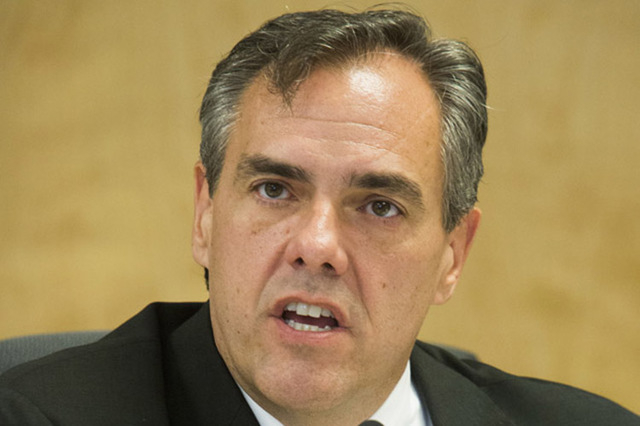Nevada education ranked last in nation

Nevada’s public school system remains dead last in the nation for a third year running, according to an analysis of children’s well-being that was released by the Annie E. Casey Foundation today.
“Nevada continues to gain ground, but we remain in 50th place. That’s unacceptable,” said Nevada Superintendent of Public Instruction Dale Erquiaga, calling for more improvement. “We’re changing the way the state department (of education) works and expect districts to do the same.”
Nevada children didn’t fare much better for overall well-being, beating only New Mexico and Mississippi for the umbrella ranking taking into account children’s health, education, economic security and state of families and the community.
“I wasn’t surprised at all,” said Rennae Daneshvary, director of Nevada’s portion of the 25th annual Kids Count report, commonly finding Nevada near the bottom of the barrel. “At least we’re not Mississippi.”
Silver lining for silver state
While some states fell or rose in their rankings, Nevada stayed at 48th for children’s well-being, said Daneshvary, associate director of research and administration at the University of Nevada, Las Vegas’ Center for Business and Economic Research.
There’s a silver lining for the Silver State. Even though the report describes Nevada’s rankings as “dismal,” children’s well-being improved across 11 of the 16 measurements used by Kids Count.
The report shows Nevada schools gaining ground among all educational measurements used by Kids Count.
“Even though the state’s improving, it’s got a long way to go,” said Laura Speer, the foundation’s associate director of policy reform and advocacy, pointing particularly to education.
About 40 percent of Nevada’s high school seniors didn’t graduate on time in 2012, 4 percentage points better than the baseline year of 2006 but the highest failure rate in the country and double the national average. Nevada also had the lowest preschool participation rate in the nation, with 30 percent of children receiving schooling before kindergarten compared to a national average of 46 percent.
“There’s no excuse for us to be 10 to 20 (percentage) points behind the rest of the nation,” said Erquiaga, emphasizing that the state’s 17 school districts need to spend more time on making sure high school students earn their credits and pass the state-required exit exams. “Districts have to continue rethinking their efforts before students fall so far behind they can’t catch up in time.”
As for preschool participation, that’s largely out of districts’ and his department’s control, determined by state and federal funding, he said. But he expects that to increase next year because of funding changes and the Legislature’s leanings.
‘Perhaps we’ll improve’
Daneshvary expects to see some higher rankings when she assembles Nevada’s report next year. So does Speer, seeing the state’s decreased unemployment rate and a high school graduation rate that increased to 71 percent in 2013, more than 10 percentage points better than the number from today’s report using 2012 figures.
“Perhaps we’ll improve,” said Daneshvary. “I always hope.”
Another category of children’s well-being also experienced sweeping improvement in Nevada: health. Rates fell for low-birth weight babies, children without health insurance, youth deaths and teen abuse of alcohol and drugs, according to the report.
The state still ranks 47th in children’s health because of statistics such as its rate of uninsured children, the highest in the United States at 17 percent compared to a national average of 7 percent.
The area where Nevada children continue to worsen is economic security, ranking 47th.
More and more Nevada youth live in poverty, have parents without secure employment and live in households with a high housing-cost burden.
About one in four Nevada children live in poverty, a rate that has increased by 85 percent since 1990, the first year of Kids Count.
And it’s a rate that affects schools, Erquiaga said.
Research has shown that poor students cost more to educate, and one in two of Nevada’s 445,000 public school students qualify for cheap or free school meals, according to the Nevada Department of Education.
“That’s our demographic,” Erquiaga said. “This is who we are as a people.”
Contact Trevon Milliard at tmilliard@reviewjournal.com or 702-383-0279. Find him on Twitter: @TrevonMilliard.












